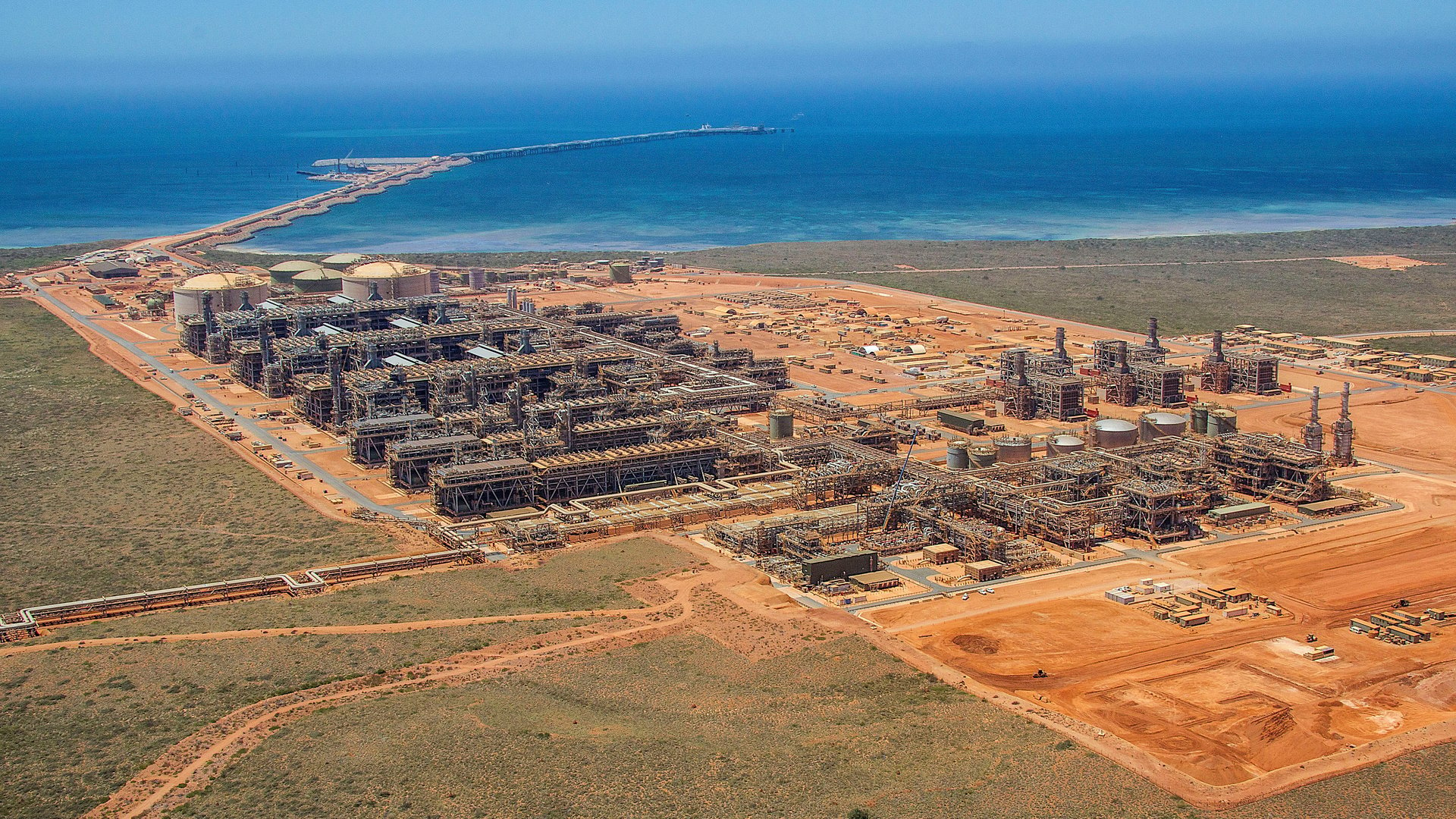Chevron starts its unique project that buries carbon dioxide underground
Australia is among the few rich countries whose greenhouse gas emissions continue to reach record highs. About half the increase the country saw in 2018 is down to a single source: the Gorgon gas project in the state of Western Australia.


Australia is among the few rich countries whose greenhouse gas emissions continue to reach record highs. About half the increase the country saw in 2018 is down to a single source: the Gorgon gas project in the state of Western Australia.
Built by Chevron in 2016 at a likely cost of $88 billion, the facility produces 25 million metric tons of natural gas and up to 10 million metric tons of carbon dioxide each year. That’s because the Gorgon gas field contains not just natural gas but also carbon dioxide (which exists in many gas fields around the world). Chevron has to separate the carbon dioxide from the mixture before it can liquefy natural gas for transport.
Most of the carbon dioxide separated from the process is released to the atmosphere. But the Australian government granted Chevron the permission to extract gas on the condition that the company will bury some of the carbon dioxide.
On Aug. 8, after a two-year delay on its promised start, Chevron announced that it began injecting compressed carbon dioxide in a sandstone reservoir beneath a nature reserve on nearby Barrow Island. The company said that, after initial tests are complete, it will bury as much as 4 million metric tons of carbon dioxide annually—cutting the project’s carbon footprint by about 40%.
To put the reduction of greenhouse gases in perspective, all the rooftop solar installed in sunny Australia collectively saves the country about 6 million metric tons of carbon dioxide, according to Bill Hare, CEO of Climate Analytics.
The technology at the heart of the project is called carbon capture and storage (CCS), and the UN’s Intergovernmental Panel on Climate Change considers the technology vital in cutting global emissions. Although the technology has been used commercially for more than 50 years, there are only about 20 large-scale CCS projects operating in the world today. That’s because there isn’t always money to be made in the process.
Most CCS facilities inject the captured carbon dioxide into oil fields, where CO2 dissolves the oil and actually increases the volumes that can be recovered. In Norway, Equinor (formerly Statoil) buries carbon dioxide in saline aquifers, because releasing the gas would require paying a steep carbon price.
That’s what makes the Gorgon project different. The carbon dioxide buried is neither used for enhanced oil recovery nor is it buried to avoid a carbon price. It’s being buried simply because the Australian government asked Chevron to do so. Once working at full scale, it will be the world’s largest CCS facility that simply buries the greenhouse gas in underground reservoirs—out of sight and out of mind.
You can read Quartz’s deep dive on CCS technologies in this award-winning series.